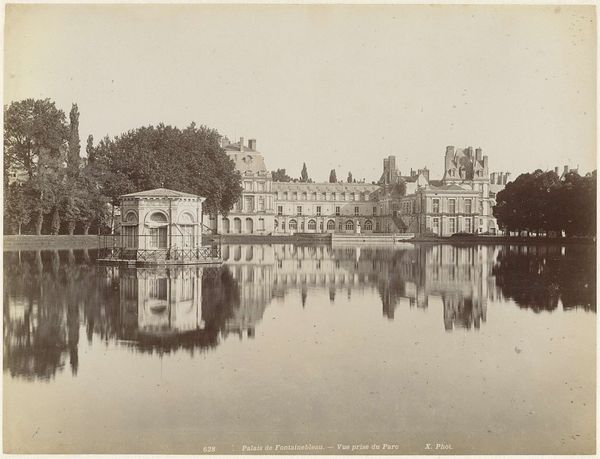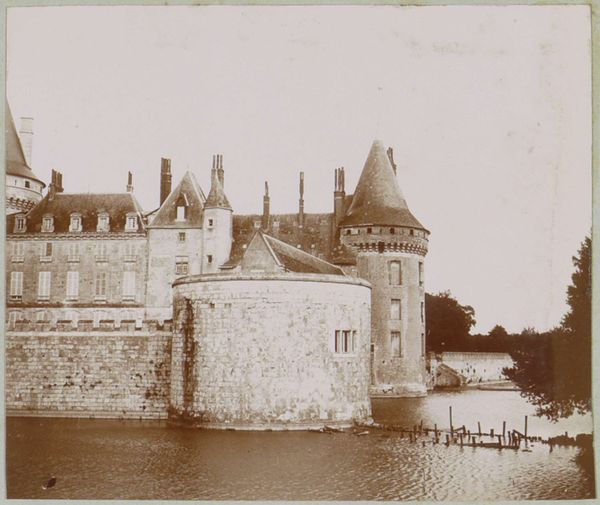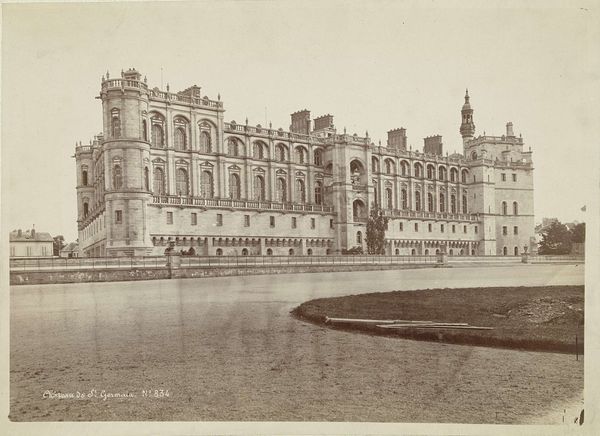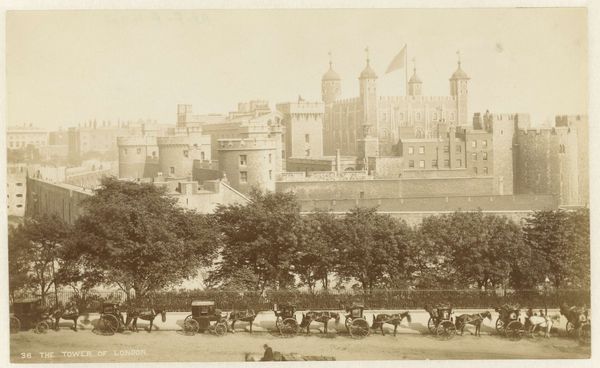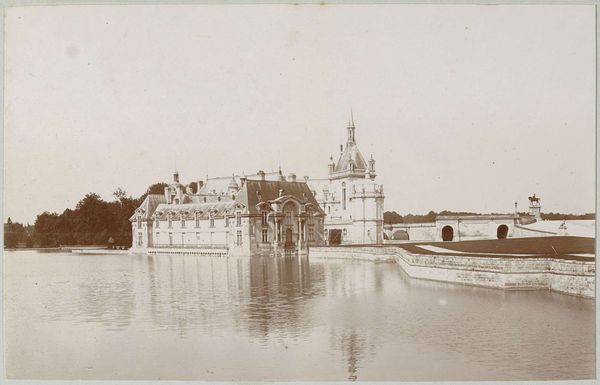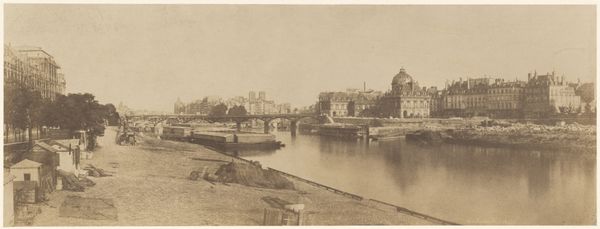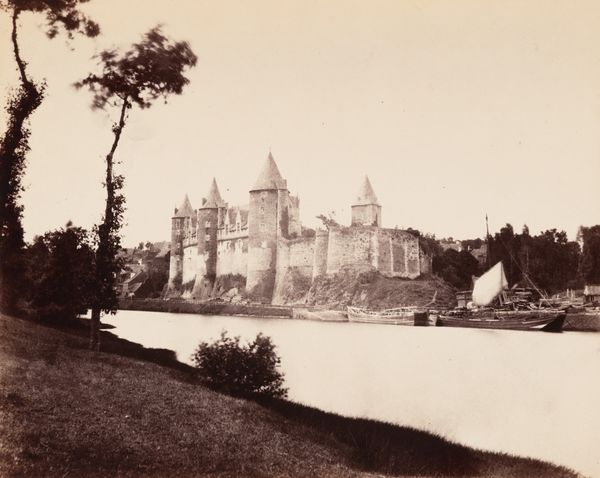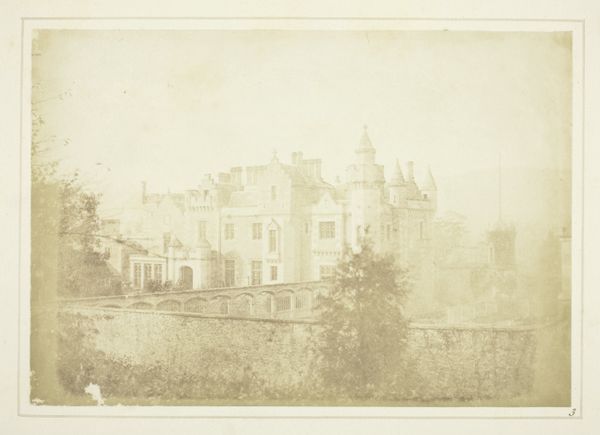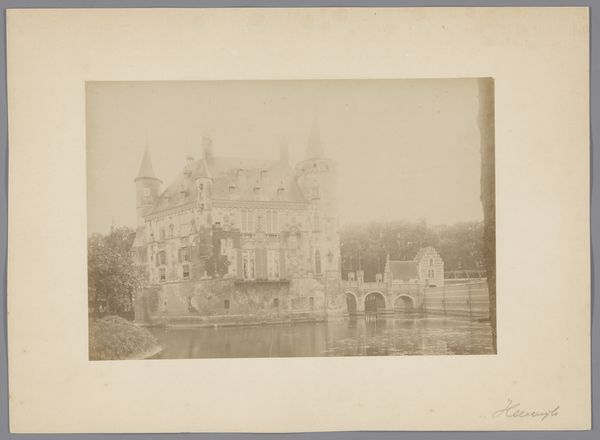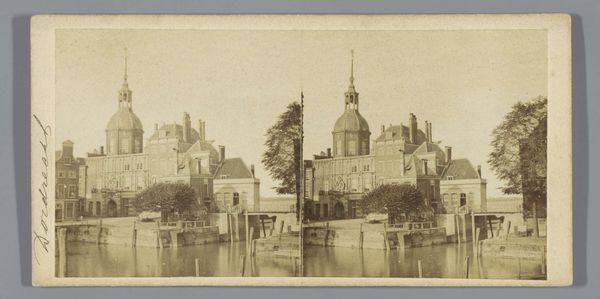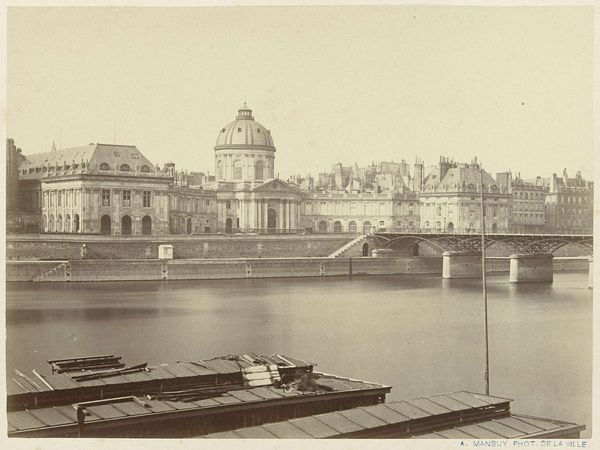
plein-air, photography, albumen-print, architecture
#
scenic
#
plein-air
#
landscape
#
outdoor photograph
#
outdoor photo
#
historic architecture
#
photography
#
monochrome photography
#
cityscape
#
albumen-print
#
architecture
#
monochrome
Dimensions: height 216 mm, width 275 mm, height 292 mm, width 355 mm
Copyright: Rijks Museum: Open Domain
Curator: Before us, we have a photograph titled "Kasteel van Amboise, aan de Loire," taken sometime between 1863 and 1900 by Neurdein Frères. Editor: It's remarkably still. The water is like glass, reflecting the castle, and that monochrome emphasizes a sense of permanence and history. I'm immediately drawn to the massive scale of the buildings. Curator: Scale is certainly key here. Look at how the castle dominates the landscape, almost pressing down upon the town nestled along the riverbank. It speaks of power, both architectural and symbolic, rooted in a feudal past. The choice of albumen print lends itself to the depiction of intricate stonework. Editor: Yes, you can really see the textures. And what is that floating structure in the foreground? It looks almost industrial, stark against the backdrop of this opulent château. A material contrast indeed. Curator: A fascinating point. Perhaps that structure points to a changing Loire Valley. The castle represents a traditional social hierarchy, whereas a functional building like that hints toward mercantile development. What we may perceive today as timeless was already showing signs of evolution. Editor: Right, the photograph shows us both an idealized past and a progressing present through materials and composition. It’s an outdoor photograph capturing this duality. Even the tonal gradations in the water show the shifting light and change. Curator: Photography itself contributes to the theme of duality here. This photo presents as a seemingly objective rendering of the castle. Still, through Neurdein Frères’ careful composition, it suggests specific ways to read and interpret place. Editor: Exactly. By carefully staging the view, by using a chemical process and a camera, by choosing to capture this specific viewpoint—it transforms raw materials and subjects into enduring art. Seeing the scenic, but knowing that artifice underpins it. Curator: An albumen print immortalizing not just a landscape, but the values and meanings projected onto it. Editor: Agreed. There's such density of layers embedded into that sepia tone. I can still detect the means of production that went into it.
Comments
No comments
Be the first to comment and join the conversation on the ultimate creative platform.
